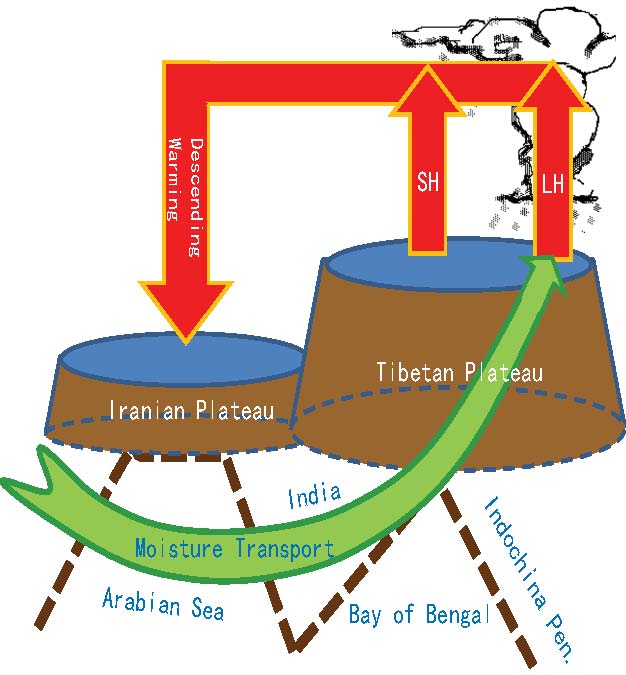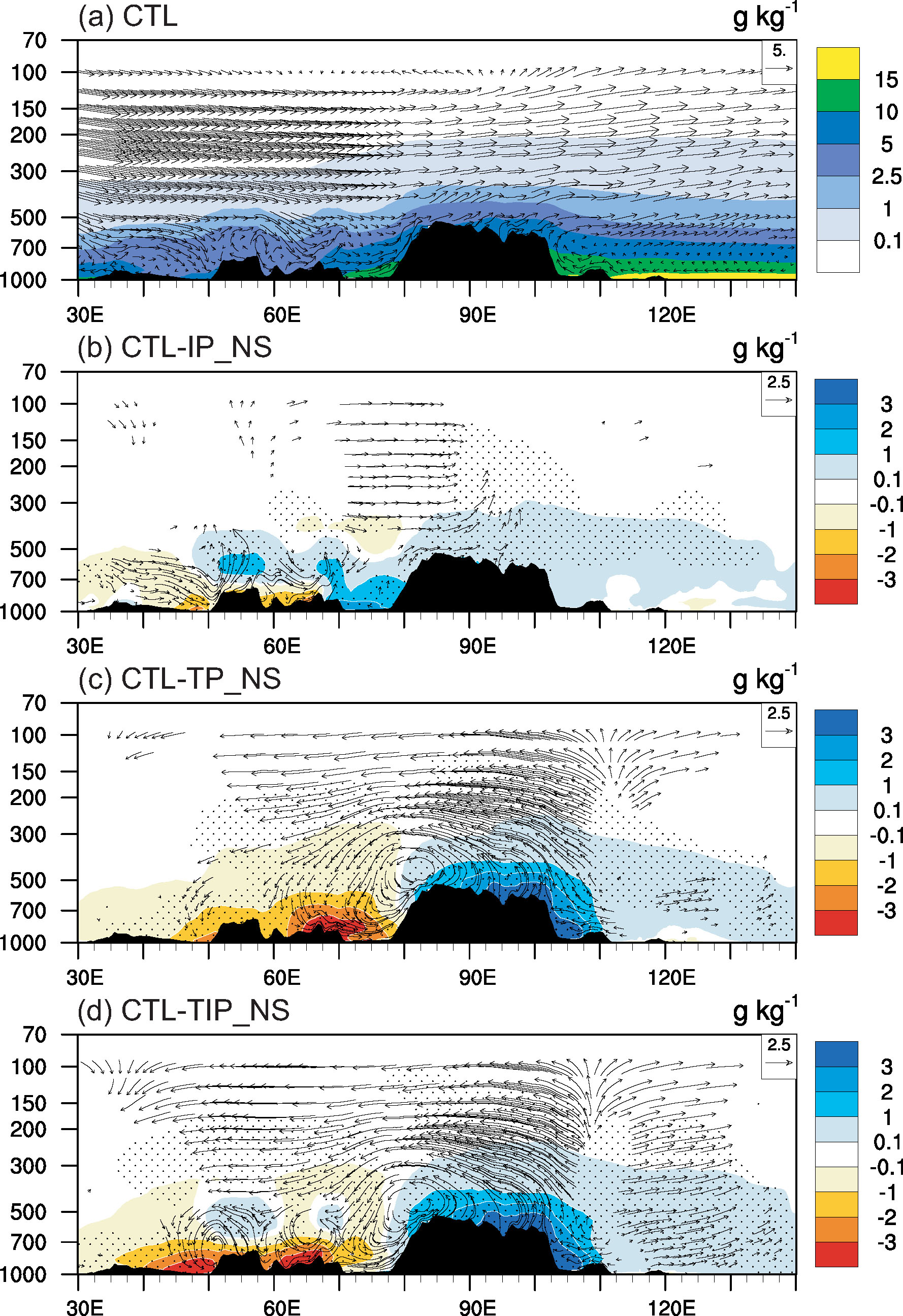State Key Laboratory of Numerical Modeling for Atmospheric Sciences and
Geophysical Fluid Dynamics (LASG)
Institute of Atmospheric Physics, Chinese Academy of Sciences

Vol. 2/No.2 April 2017
[Climate Dynamics]Two types of summertime heating over Asian large-scale orographyand excitation of potential-vorticity forcing II. Sensible heating overTibetan-Iranian Plateau
The TP and its neighboring Iranian plateau (IP) both havedynamic and thermal influences on atmosphere circulation. The South AsianHigh (SAH)represents a dipole mode, but the thermal structure of free-air between the TP and IP hasmajor differences. This means that thethermal structure of the IP and heat source of the TP interact.
Recently, based on data analysis and model simulation, Prof. Liu Yiminand coauthors pointed out that the heat source of the TP and IP together with the moisturetransport to South Asia constitutes a mutual feedback couplingsystem called the Tibetan-Iranian Plateau coupling system(TIPS) (Figure1). The surface sensible heating (SH) over the Tibetan Plateau (TP) and Iranian Plateau (IP) in summer not only have mutual influences but also feedback to each other. In the TIPS system, interaction between surface SH and LH over the TP plays a leading role.SH of the IP and TP influences on other regions not only have superimposed effects but also mutually offset (Figure 2).In addition, the heating effect of TIPS increases the upper tropospheric temperature maximum and lifts the tropopause, cooling the lower stratosphere (Figure 3). Such interaction influences the SAH location and controls thespatiotemporal variability of the Asian summer monsoon.

Figure 1 Schematic figure of a feedback coupling system (TIPS) composed of thermal forcing over Tibetan Plateau, Iran Plateau, and water vapor transport in South Asia

Figure 2 Pressure-longitude distribution of simulated specific humidity (shading) and circulation (u, W×200) along 30°N in summer. (a) CTL, and differencesof with and without sensible heating; (b) CTL-IP_NS; (c) CTL-TP_NS; (d) CTL-TIP_NS. Dotted and arrow areas in (b)–(d) indicate significance at 0.1 level.

Figure 3 Difference between background test CTL and tests without sensible heating of temperature (shading), wind field (vectors) at 300 hPa ((a), (c), and(e)) and 100 hPa ((b), (d), and (f)) separately. (a), (b) CTL−IP_NS; (c), (d) CTL-TP_NS; (e), (f) CTL-TIP_NS. Dotted and arrow areas indicate significance at0.1 level.
Citation:
Liu Y M, Wang Z Q, Zhuo H F, Wu G X. 2017. Two types of summertime heating over Asian large-scale orography and excitation of potential-vorticityforcing II.Sensible heating over Tibetan-Iranian Plateau. Science China Earth Sciences, doi: 10.1007/s11430-016-9016-3
Download: http://engine.scichina.com/doi/10.1007/s11430-016-9016-3
Corresponding author: Guoxiong Wu (gxwu@lasg.iap.ac.cn)
E-mail: lasg_newsletter@lasg.iap.ac.cn
Editors: Chuanyi Wang (wangcy@lasg.iap.ac.cn), Kangjun Chen(ckj@lasg.iap.ac.cn)